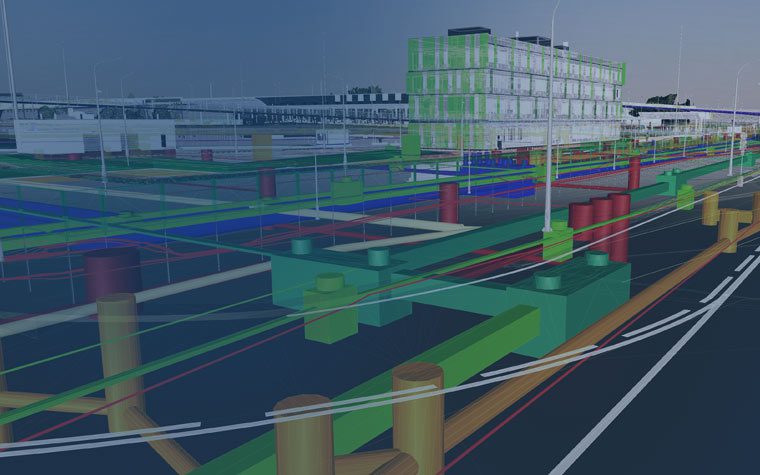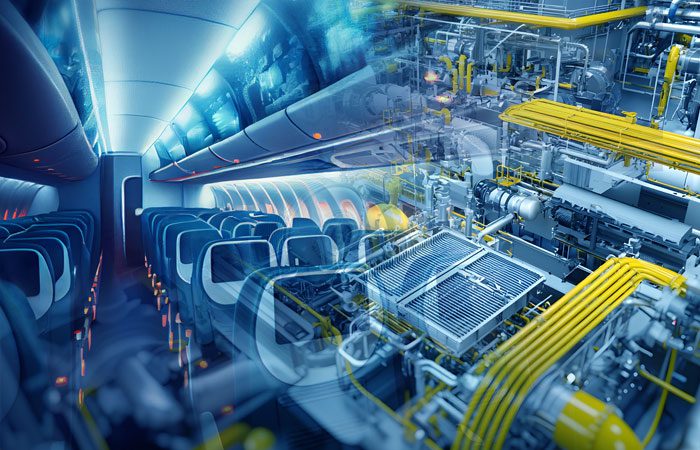
Leveraging BIM for Clash Detection and Coordination in Large-Scale MEP Projects
When working on large Mechanical, Electrical, and Plumbing (MEP) projects, anyone who’s been involved knows how complicated things can get. Pipes, ducts, cables, and equipment all need to fit perfectly within tight spaces, and with so many different teams involved, it’s easy for something to get missed. Traditionally, these coordination headaches often lead to clashes popping up on site—causing delays, costly fixes, and a lot of frustration.
That’s why more and more engineering teams are turning to Building Information Modeling (BIM) for clash detection and coordination. Instead of discovering problems during construction, BIM helps identify and resolve these conflicts early, keeping projects on track and saving time and money. In this blog, we’ll explore how BIM makes this possible, why it’s such a game-changer for MEP projects, and how you can leverage it effectively.
The Challenge of Coordination in Large-Scale MEP Projects
MEP systems are among the most complex components of building infrastructure. They involve extensive ductwork, piping, electrical conduits, HVAC units, fire protection systems, and more, all woven into tight architectural and structural constraints.
Common challenges include:
- Spatial conflicts between ducts, pipes, and structural elements
- Inconsistent drawings leading to on-site confusion
- Difficulties in tracking changes across multiple disciplines
- Rework and schedule overruns caused by late conflict detection
These issues lead to inflated project costs and damage client trust. The solution lies in harnessing BIM’s capabilities to improve visibility and collaboration from design through construction.
How BIM Transforms Clash Detection and Coordination
- Centralized 3D Modeling
BIM consolidates architectural, structural, and MEP models into a unified 3D environment. This integrated model:
- Provides a comprehensive spatial representation
- Enables visualization of how systems interact
- Facilitates collaboration among architects, engineers, and contractors
With a single source of truth, stakeholders can work from the same accurate data, drastically reducing discrepancies.
- Automated Clash Detection
Using Tools like Autodesk Navisworks, Solibri, and Revit’s interference check and clash detection features help automate the process of identifying conflicts between building components.
- Hard clashes: Physical overlaps between systems (e.g., pipe running through ductwork)
- Soft clashes: Clearance violations or maintenance space issues
- Workflow clashes: Scheduling conflicts or installation sequence problems
Automated clash reports identify issues early in the design phase, allowing teams to resolve them before construction begins.”
- Improved Coordination Workflows
BIM-based coordination fosters an iterative process where:
- Disciplines review clash reports and adjust models
- Coordination meetings leverage 3D visualizations to discuss and resolve conflicts
- Updated models are rechecked for clashes, ensuring continuous quality control
This cycle promotes transparency and accountability while minimizing surprises during construction.
Benefits of Leveraging BIM for Clash Detection in MEP
- Reduced Rework and Cost Savings: Early clash detection prevents costly on-site modifications.
- Accelerated Project Timelines: Streamlined coordination accelerates approvals and construction schedules.
- Higher Quality Deliverables: Coordinated models reduce installation errors and improve system performance.
- Enhanced Stakeholder Collaboration: Shared models improve communication between clients, consultants, and contractors.
- Improved Safety: Identifying clashes early helps avoid hazardous conditions during installation.
Case Study Snapshot: A Large Hospital MEP Project
Consider a large hospital project with extensive HVAC, medical gas piping, electrical systems, and fire safety installations. Early in the design phase, BIM-enabled clash detection identified over 200 conflicts between MEP systems and structural elements, including:
- Duct clashes with ceiling beams
- Conflicts between electrical conduits and plumbing lines
- Insufficient clearance for equipment maintenance access
Addressing these clashes upfront saved the project an estimated $1.5 million in potential rework costs and reduced construction delays by several weeks.
TAAL Tech’s Expertise in BIM-Enabled MEP Coordination
At TAAL Tech, we specialize in delivering precise BIM coordination services tailored for large-scale MEP projects. Our multidisciplinary teams bring deep expertise in:
- Creating federated BIM models integrating all disciplines
- Running comprehensive clash detection cycles using industry-leading software
- Facilitating coordination meetings and tracking issue resolutions
- Preparing constructible models that meet client and contractor needs
By leveraging our proven BIM workflows, clients experience smoother project execution, reduced risk, and optimized resource use.
Overcoming Challenges in BIM Clash Detection
While BIM-based clash detection offers many benefits, firms should be aware of challenges:
- Data Quality and Consistency: Poorly developed models can lead to false positives or missed clashes.
- Interoperability Issues: Integrating models from different software requires careful management.
- Change Management: Coordinating updates across teams demands discipline and clear communication.
- Training and Expertise: Effective clash detection requires skilled professionals proficient in BIM tools.
TAAL Tech addresses these by enforcing rigorous quality checks, maintaining robust data protocols, and investing in continuous team training.
Future Trends: AI and Cloud-Based Coordination
The future of BIM clash detection lies in automation and smarter collaboration:
- AI-Driven Clash Detection: Machine learning algorithms can prioritize clashes by impact and suggest resolutions.
- Cloud Collaboration Platforms: Autodesk Construction Cloud enable real-time clash management accessible to all stakeholders.
- Integration with VR/AR: Immersive technologies allow on-site teams to visualize and resolve clashes more intuitively.
These advancements will continue to refine coordination processes, making MEP projects faster, safer, and more cost-effective.
In the complex landscape of large-scale MEP projects, BIM-based clash detection and coordination have become indispensable tools. By enabling early conflict identification, improving interdisciplinary communication, and supporting data-driven decision-making, BIM helps engineering teams deliver projects on time, within budget, and at the highest quality standards.
With partners like TAAL Tech offering expert BIM coordination services, engineering firms can harness the full power of BIM to transform how MEP systems are designed, built, and operated — paving the way for smarter, more efficient infrastructure.


